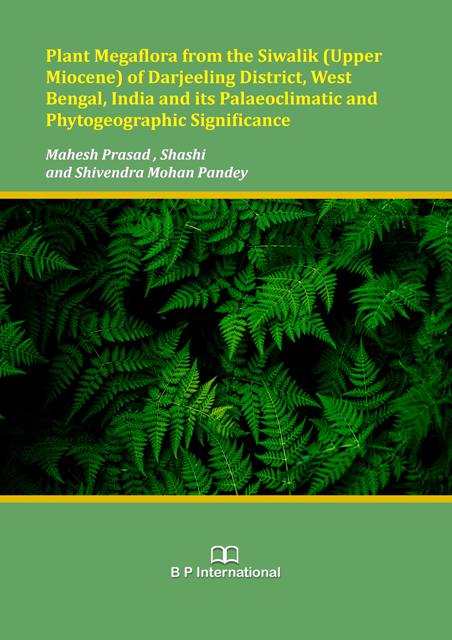Plant Megaflora from the Siwalik (Upper Miocene) of Darjeeling District, West Bengal, India and its Palaeoclimatic and Phytogeographic Significance
Plant Megaflora from the Siwalik (Upper Miocene) of Darjeeling District, West Bengal, India and its Palaeoclimatic and Phytogeographic Significance,
23 November 2022
,
Page 1-177
https://doi.org/10.9734/bpi/mono/978-93-5547-945-7
Abstract
Qualitative and quantitative analysis of fossil assemblage so for recovered from the Middle Siwalik sediments of Darjeeling district,West Bengal revealed the occurrence of 35 new taxa belonging to 18 angiospermous families. On the basis of present data as well as already known data from there, the reconstruction of vegetation scenarios of Himalayan foot hills during Siwalik time has been done and also discussed on problems related to plant diversity, endemism, and migratory pathways of mainly phytogeograpraphically important taxa. The analysis of present day distribution of all the recovered taxa from the region shows that they are mostly known to occur in Northeast India, Bangladesh, Myanmar and Malayan region wherever favourable climatic conditions are available. About 1/3 taxa of total assemblage found to grow presently in the Himalayan foot hills of the eastern region and remaining 2/3 taxa are locally extinct. This indicates that the climatic changes must have taken place after Mio-Piocene, times. The dominance of evergreen elements in present fossils assemblage indicates the prevalence of tropical warm humid climate with plenty of rainfall during the deposition of sediments. Foliar physiognomic approach for reconstruction of palaeoclimate further suggests that the Oodlabari area in the Himalayan foot-hills of West Bengal enjoyed a tropical climate (with MAT 28.9
On the basis of present fossil assemblage, the Coexistence intervals of different climatic parameter ie. Mean annual temperature (MAT), Wormest month temperature (WMT), Coldest month temperature (CMT), and Mean annual precipitation (MAP) have been estimated as 22
- Megafossils
- leaf impressions middle siwalik
- upper Miocene
- Himalayan foot hills
- Darjeeling District
- West Bengal
- palaeoclimate
- coexistence approach
- foliar physiognomy approach
- mat and map
- phytogeography

